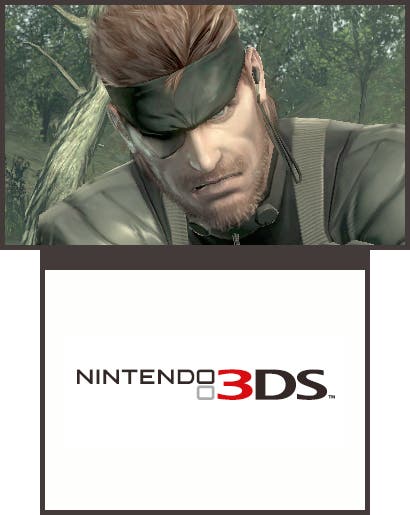Nintendo 3DS
Hands-on at E3 with the 3D handheld.
The new Kid Icarus game wasn't playable, but the in-engine trailer made sense of this rather odd - if fan-pleasing - choice of launch game. Fast, into-the-screen flight action is the perfect high-impact demonstration for what 3D can do in games. The only fully playable demo was for Nintendogs. I could interact with a silhouette of the puppy on the touch screen while watching the 3D image above, petting it and throwing a boomerang or tennis ball around a spacious, well-lit room. It was less immediately showy than some of the other demos, but had a profound solidity to it.
The machine's 3D camera is no high-resolution photography tool, but it is a delightful toy. The images produced are a bit fuzzy but it appears to cope well with a range of lighting conditions, and it's hard to imagine the novelty of the 3D effect on the images you snap - or view live with a remarkably good frame rate - wearing off. You can adjust the focus and 3D depth.
As for the hardware itself, the 3DS is almost exactly the same dimensions and weight as a DSi and is instantly familiar to hold. It feels as solidly constructed and ergonomically comfortable as you'd expect of a Nintendo machine. It has bevelled edges and a graphite grey finish that give it a modestly futuristic look, while the top 3D screen and its pure black surround are under a single glossy surface - an iPhone-style presentation that looks great and really makes the image pop.

You could say the analogue slide control was like the PSP's, but that would do it a terrible disservice, frankly. It's the same concept, infinitely better realised. The spring is much looser, the very slightly concave surface holds your thumb well and the positioning is perfect. On the demos that allowed you to use it to rotate models or pan around the scene, it offered precise and smooth control. The d-pad beneath is now a little out of the way - it was under the joint of my (long) thumb - but will be nice to have for menu selection.
The face buttons are exactly similar to a DSi's, while the left and right shoulder buttons are slightly smaller. Between them on the back of the unit is cartridge slot that seems wider than that on previous DS units. The left side of the console has a volume slider and an SD data card slot, the right side a wi-fi switch, and there are Start, Select and Back buttons - under a smooth surface, but slightly raised and clicking when pressed - below the screen. The 3D slider is small and it must be said slightly fiddly, but its positioning on the right of the top screen is very easy to reach. A little green "3D" appears when the effect is turned on.
To hold one is to want one. It might not have the luxurious feel of an Apple product, but through a few subtle design choices Nintendo has produced a device that shares all the friendly and reliable qualities of the DS family whilst adding an edge of technological cool.
And that's before you switch it on and see that screen, and get sucked into the private world suspended in your hands. Is it just a gimmick? Maybe so, but it's a magical, irresistible one, backed up by hardware that would be a great improvement without it, and in a compact and fuss-free form that sails past any other consumer 3D products in terms of accessibility and comfort.
We need to know how much it will cost, of course, but on this showing Nintendo has not only reinforced its dominance of handheld gaming but shot to the front of the queue to own the a burgeoning new entertainment market. Nintendo 3DS is the mass-market 3D device. It's that simple.
